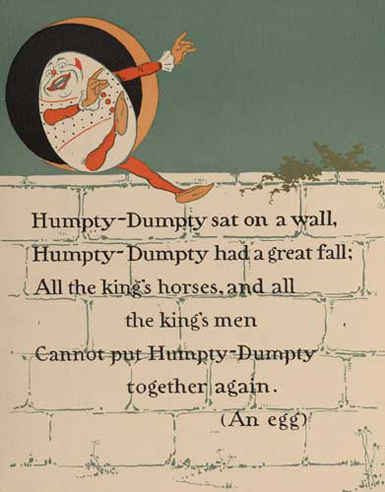Durio asked me to write an article on how to make investing enjoyable. I thought that was a very good topic to explore, and what better time then to do it in a bear market like this? Have fun while working and you’ll never find yourself working again.
My definition of investing in this article refers to a very general kind – any activities related to the stock market, which includes trading for short term. Why not try some of the activities suggested while waiting for the Return of the Bull? I divided the activities into two parts, one for the technically inclined and the other for the fundamentally inclined.
For the fundamentally inclined:
For those who are classified as ‘long term investor’ type, you can play a stock market trivia. There are so many companies listed in SGX, each with their own peculiarities and oddities that you’ll never run out of pure fun! You can do a search of the ‘most’ list, like:
1. Which company has the lowest PE?
2. Which company has the highest dividend yield?
3. Which company has the highest net margins?
4. Which has the greatest discount to NAV?
Actually the harder questions are those that relate to the business, not the numerical figures as the latter can be easily found using any competent stock screeners. For more advanced level, try these:
5. Name a listed company that deals with printing of annual reports, IPO prospectuses, and shareholders’ circulars in Singapore?
6. Is there a listed company here that do funeral and crematorium business?
7. Is there a listed company here that manufactures and sells batteries?
8. Is Sakae Sushi listed?
9. Is POEMS listed?
Suggested answers:
Do note that the thing is based on Shares Investment book, number 338 edition, which is from 18th Aug to 31st Aug 2008. As such, new market information thereafter might change the answers.
1. Ossia International, PE of 0.7
2. Transpac Industrial, having a yield of 47.3%
3. Rowsley, having net profit of $5,607,000 net profit on a sales revenue of $6,000 in FY08, resulting in a net profit margin of 93,450%
4. Enporis Greenz (formely Seksun) having a NAV of $0.441 and current price of $0.05, resulting in a discount to NAV of 88.7%.
5. I know Xpress is one.
6. Asia-Pacific strategic investments (what a misnomer!)
7. GP batteries
8. Sakae Sushi itself is not listed, but its owned by a Apex-Pal International which is listed. Apex-Pal also owns Hei sushi, Crepes & Cream, Uma Uma Men and Sho-U
9. I do not think so. It’s a private company.
For more fun, try walking around and finding brands, then check to see if those brands are listed, either here or other countries. Do check their margins and profitability; you’ll be surprised on what you’ll find! For example:
a. Durex – listed in UK (I think), under SSL international, which also owns Scholl. Contrary to my feelings that I’ll be a good profitable company, they registered a net loss in the recent financial year. Operating margin is around 12+%. It’s interesting to note that they are building their manufacturing facilities in China.
b. Wiley, publisher of many journals and books, is listed in US. They have an EPS CAGR of 18% since 1998, with an ROE of 22% with net margins of around 7.7%. Quite respectable.
c. Coach, famous for its brand of bags, is listed in US. They have a net profit margin of 24.3%, gross margin of 77.4% and ROE of 33%. That’s what I call branding power!
d. Adidas, listed on Deutsche Börse stock exchange in Frankfurt, had a gross margin of 47%, net margin of 5.4%, 18.2% ROE. EPS CAGR of 17% from 2003 to 2007. Net margins of 5.4% is quite on the low side, my opinions of course.
For the technically inclined:
You can start looking out for obscure yet potentially potent chart formations. Here's a few of them:
Vampire duck formation

Chart shows a vampire duck formation. It's a very bearish sign, with the bearishness in sync with the length of the 2 vampire tooth (specifically, the top vampire tooth). As the formation builds up, we have to look at the legs of the duck. As can be seen in the chart, there is a well formed legs which forms the fulcrum that leverages the duck forward, creating a short term price vacuum that is proportional to the spike of the volume generated at the legs. Potential downside is usually twice the distance from the tip of the front tooth to the legs, as the fulcrum of the legs dip the duck forward.
Downside is 129 - (139 - 129) = 119
Dragon drinking water formation

Here's a rare glimpse of the dragon drinking water formation. The formation is characterized by the downward sloping dragon approaching the water body of MACD. Formation is usually bullish in nature, especially when the spacing of the two legs are in 23.6% and 61.8% of the whole length of the dragon, coinciding with the Fibonacci retracement zone period. Money Flow Index (MFI) shows a reversal in the making as the dragon prepares for the upward flight after touching the water base. Price target is unclear yet as there is also an equally likely possibility of the dragon drowning in the water body, especially when the price goes below 0.20, which is the water base level. If the head of the dragon goes below the water base at 0.20, institutional support is deemed to have left and the dragon will drown, possibly towards 2/3 of the water base, at 0.134.
Bloated baby syndrome:

This particularly dangerous chart formation is a mutated head and shoulders, a very bearish sign too. This chart formation is characterized by the small head, bloated belly and the upright legs. There must be a volume spike at the baby's belly for the chart to be valid, followed by a gradual decline in the volume. This twisted pattern will usually end with the baby breaking wind, forming a downward pressure to the price, with a target objective of at least twice the distance from the tip of the belly to the end of the leg, measured downwards. Hence we can expect a downtrend pressure of the price towards $0.08. Terrible.
Who says investment is not enjoyable?!




































